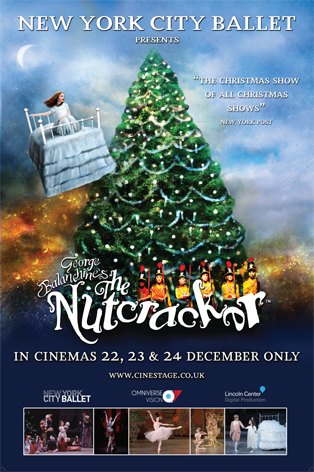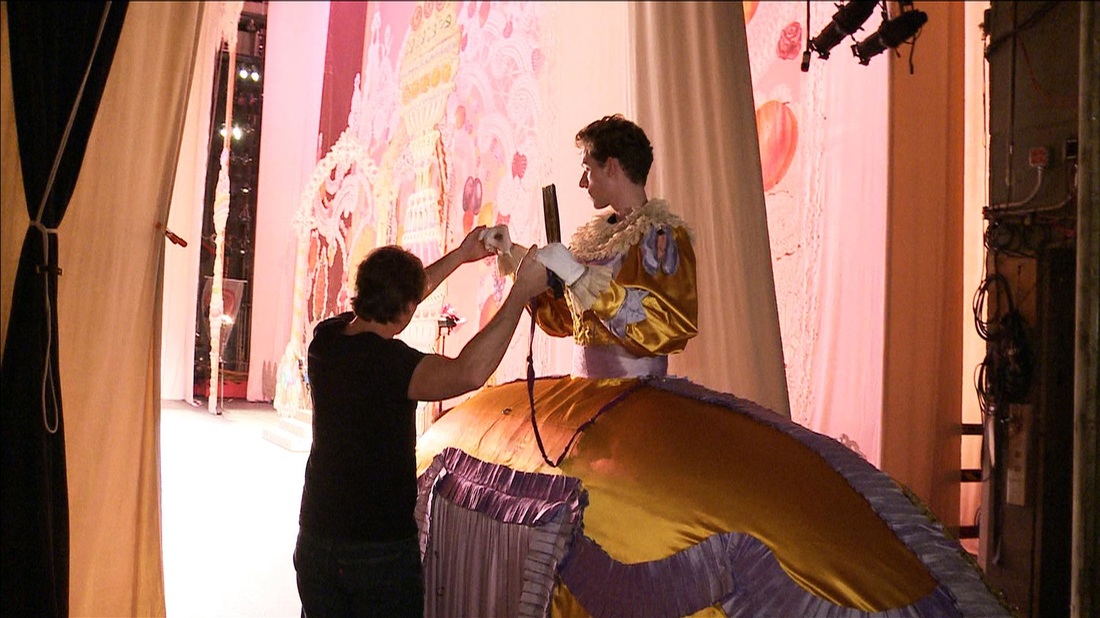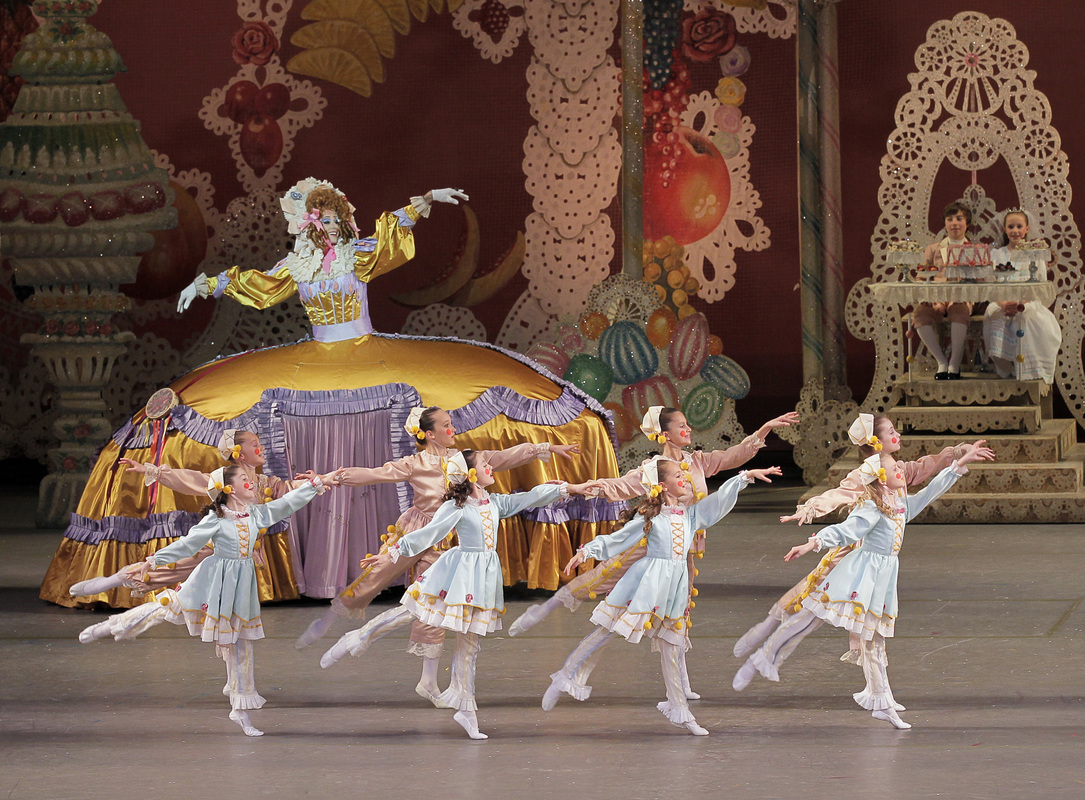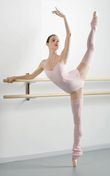I have given several backstage tours in the past few weeks as friends and family have come to see the NYCB’s annual spate of Nutcracker performances, and I have noticed that while the children are not that interested in how the show’s visual effects are produced, the adults are incredibly curious about the stagecraft. I wonder if children today are so inured to the special effects in film and video-games that they aren’t that impressed by the physics-defying coups of the production, like the Sugarplum Fairy’s toe slide. "We live in the grip of a technological paradox, in which the proliferation of wonders dilutes the possibility of wonder," NY Times film critic A. O. Scott wrote recently. Or maybe they are just at the age when magic is real and expected—it is the time of year in which Santa circumnavigates the globe in one night with flying deer after all.
Balanchine’s Nutcracker is theatrically impressive, but the magic is decidedly old-school. Many of the innovations are borrowed from the Mariinksy production Balanchine danced in as a young boy (the ballet premiered in 1892). When people come backstage the first thing they want to know is how the bed moves by itself in Act I. Many imagine that it involves a motorized system that adjusts
The Sugarplum slide, which never fails to elicit oohing and applause, is also not as mechanized as most people believe. It employs a basic pulley system cranked by hand. A tiny patch of stage marley is attached to a cable and two stagehands wheel it in from the wings on one side of the stage while two other stagehands keep the line taut and smooth on the other side. The extra patch of flooring is quite small, and the Sugarplum must place her toe in exactly the right spot or it won’t work. Her Cavalier has to avoid stepping on the cable as he walks backwards and steadies her. That it works so seamlessly so often is a testament to the talents of the dancers and the crew! The floor patch and cable are whisked entirely offstage during the loud chords of music at the close of the pas de deux when the couple is far downstage so the audience won’t notice.
The old-timey effects are certainly not easy on the dancers or the crew. The Mother Ginger must haul a very heavy skirt while walking on stilts and trying not to step on the tiny toes of eight children underfoot. This is why it is performed in drag by some of the tallest and strongest men in the company. The dancer who performs the Chinese lead must stay crouched in a claustrophobic, pitch-black box from the end of the Arabian dance to several eights into his solo music. He pops out into blindingly bright stage lights and has to do multiple pirouettes while his eyes adjust to the light. At the end of the dance, if he does not become compact enough when he darts quickly back into the box, he gets clunked on the head when his attendants jump on top of it on the last note of the music.
The swirling flakes in our famous Snow Scene are made of paper confetti that stagehands shake down upon the dancers from the flies above the stage. The confetti is slippery and gets stuck in the women’s eyelashes, hair, noses, and throats. Dancers are always coughing and gagging if they forget to breathe with their mouths closed. Every time someone asks how the snow gets cleaned up so quickly during the intermission it makes me laugh. A whole bunch of stagehands sweep it up as fast as they can! This means that if a dancer loses an earring or bobby pins during the snow scene it is unceremoniously swept up with the snow and will rain down upon the dancers in the next show—often conking an unlucky dancer on the head.
The stagehands clear the snow in no time: it is completely gone within minutes. They have to, because they have a lot of other tasks to attend to in the interim. The Act II set must be erected, and they must tape down the loose panel of the stage whence the Act I Christmas tree grows. They must also rehearse the Sugarplum slide if the lead couple wants to practice it. (The dancers do not get to do the slide in rehearsals because stagehands are not called to them.) Then the dancers in Act II get the rest of the time to practice and warm up on the stage.
The kids who come backstage seem to find all of our 2-D props to be absolutely hysterical. That the flying reindeer are flat and unpainted on their backsides always cracks them up. The deflated instruments strummed and tooted by the little angels are amusing to them too. Also shocking to children is the flat one-sided Christmas tree, since it seems so epically proportioned from the audience as it grows and grows. Considering the 3-D craze in movies right now, it is funny to consider how in the Nutcracker the performers are live and three-dimensional while many of the props and sets are as flat as pancakes.
This all is making me think about Star Wars—or perhaps I’ve just been brainwashed by the massive marketing campaign! I haven’t seen the new movie yet—I have to wait for my family to come in, it’s tradition—but I’m already worried about an overreliance on CGI. The first movies were so magical with their puppet and model-based effects. The second set of films—the prequels—were so terrible because of their awful CGI. They looked cartoonish and fake. I’m hoping against hope that The Force Awakens slants a little more towards the Nutcracker in its filmmaking techniques. And this means a lot to me, considering that Gamorrean Pig Guard was among my first phrases. Well, technically I called them “good morning pig guards,” but cut me some slack I was a year old! I’ll keep my fingers crossed for some old-fashioned magic in the new Star Wars movie, but in the meantime I’ll continue to marvel at the Jedi magic I witness backstage every day. May the force be with you all this holiday season!





 RSS Feed
RSS Feed